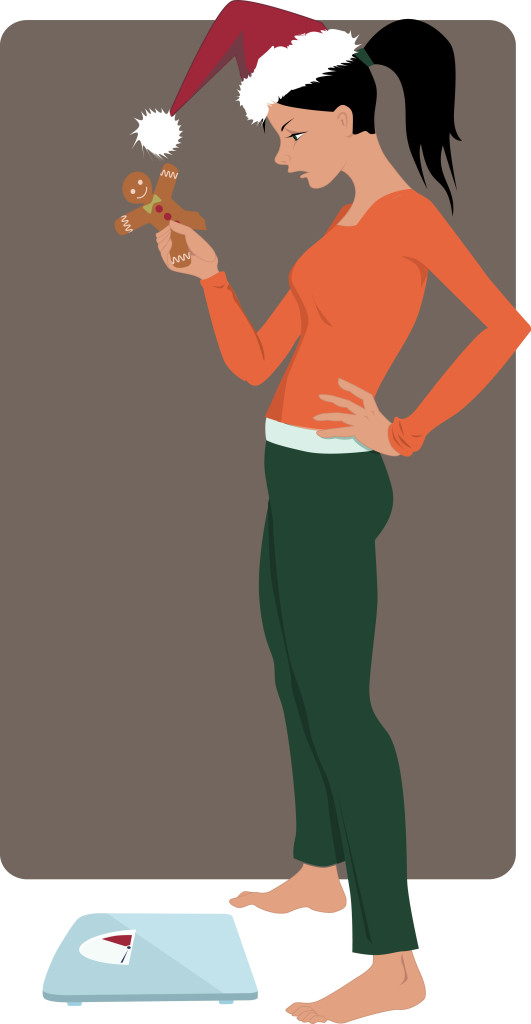 The holidays are a great time for family get-togethers, conversation and of course, food. For those of us trying not to gain the 25 pounds of Christmas, following these simple tips and tricks can keep you trim this holiday season while still letting you sneak a few bites of those steaming hot gingerbread men.
The holidays are a great time for family get-togethers, conversation and of course, food. For those of us trying not to gain the 25 pounds of Christmas, following these simple tips and tricks can keep you trim this holiday season while still letting you sneak a few bites of those steaming hot gingerbread men.
Balance your beverages
Having holiday-themed drinks can be fun, and tasty, but are best consumed in moderation. Hot chocolate, eggnog, apple cider, holiday lattes etc. can be high in sugar and fat, leaving your diet plan damaged by the end of the day. However, the following small changes can help make your drink choices a little less detrimental:
- Avoid adding marshmallows, whipped cream or “drizzle” to your beverages
- Mix eggnog or hot chocolate with half a glass of skim/low-fat milk
- Look for low-fat/low-sugar options
- Avoid adding alcohol, as it mostly adds extra sugar and calories
- Drink a glass of water after each specialty beverage to help fill your stomach and prevent overconsumption
Eat smart, don’t be a Scrooge
Starvation and dietary self-sacrifice during the holiday dinners and parties will only lead to aggravation and irritation. Besides, no one wants to hear about and all the things you can’t eat while they tear into that Christmas turkey. However, the next few adjustments can help keep you, your belly and your loved ones happy this season:
- Choose light over dark meat and avoid eating the skin for less calories and fat
- Be aware of how much you’re putting on your plate
- Avoid too much gravy or dressing in order to limit fat, calories and sodium
- Choose whole-grain breads, lean meats, nuts, veggies and fruits for appetizers
- Consume sweets/deserts in moderation or split your choice with a friend
Kitchen smart, kitchen savvy
Whether cooking for a work party or family dinner, making smarter food choices can help you and others have a healthier holiday.
- Use fresh fruits and vegetables instead of the canned option
- Use herbs and spices to flavor your masterpiece instead of loading it up with butter and salt
- Complement heavy dishes with roasted vegetables or a tossed salad
- Use whole-wheat flour instead of white flour when baking
- Cook with vegetable or olive oil instead of butter
- Use low-fat or skim milk instead of heavy cream
- Add dried fruit to baked goods instead of candies or chocolate chips
- Flavor dishes with vanilla, almond and peppermint extracts instead of butter and sugar
Win over the workplace
Work parties and functions can be the most difficult place to refuse poor food choices. But, by signing up to bring your own dish you can provide a healthy option for you and others.
Making sure to eat healthy throughout the day can also prevent you from overeating poor food choices later by keeping your stomach full and satisfied, and your mind away from unhealthy cravings.
Avoid fried and buttered foods and keep away from items with an abundance of cheese and cream. Supplement instead with grilled items, vegetables and dip or whole grain crackers.
Stay active despite the snow
The change in the weather means more layers, less daylight and an overall tendency to avoid leaving the house whatsoever. However, one of the best ways to retain your fitness physique is by beginning or maintaining an exercise regimen.
If you choose to workout outside, it’s important to wear the right gear, usually including sweat-wicking fabrics, and to keep important parts of your body covered with gloves, ear bands etc. It’s important to stay hydrated by drinking fluids before and after your workout, even if you aren’t thirsty.
Taking a walk, stretching or playing a holiday party game can be a great way to get your digestive system moving after dinner.
The holidays can be a great time to relax and enjoy time with family, friends and loved ones. This season, don’t let your inner Grinch take over! Keep an eye on the little choices you make. After a while, those calories can really add up!
More

According to the Center for Disease Control (CDC) adults should aim for 7-8 hours of sleep per night, however, balancing work, holiday shopping, family activities etc. can quickly impede on that valuable slumber. Not getting enough sleep can lead to sleepiness and lethargy, making it difficult to accomplish what is needed for the day.
Maintaining a proper amount of sleep can prevent and control chronic illnesses like diabetes, cardiovascular disease, obesity and depression. The CDC states that most adults report a sleeping problem one or more nights a week, including symptoms of sleep disorders like insomnia where it’s extremely difficult to fall asleep at all.
The National Institute of Health recommends the following number of sleep hours per person each night:
Newborns: 16-18 hours
Preschool age: 11-12 hours
School age: At least 10 hours
Teens: 9-10 hours
Adults/Seniors: 7-8 hours
Now, finding time for those 7-8 hours each day can be quite a challenge, however, consequences of poor sleep habits and sleep deprivation can lead to:
- Depression
- Memory problems
- Weaker immune system/more likely to get sick
- Decreased pain tolerance
- Trouble focusing your eyes
- Cannot stop yawning
- Daydreaming/wandering thoughts
According to the National Highway Traffic Safety Administration, driving while experiencing fatigue or sleep deprivation is responsible for approximately 100,000 car accidents and 1550 deaths each year. Sleep deprivation also magnifies the effects of alcohol, making a fatigued person far more likely to become impaired than a well-rested one.
Figuring out how much sleep you need is dependent on your age, body type and daily activities. Studies have deduced that after mapping different individual’s sleep patterns, sleep needs vary dependent on the person. Someone of the same age and gender may function fine on 7 hours of sleep a night, while someone with the same characteristics may feel their best after a solid 9 hours.
“Sleep debt,” or the amount of time where the body should have slept but wasn’t able to, can be “paid off” with additional hours slept on days off or by going to bed an hour earlier each night. In addition, researchers from the National Sleep Foundation have found that oversleeping or sleeping too much can cause depression and other health problems as well, with an increase in morbidity and mortality after continuously sleeping more than 9 hours a night.
To better your quality of sleep and assure you get the best amount of sleep for your lifestyle, it’s important to follow these tips:
- Establish a continuous sleep schedule during the week and on weekends
- Practice a relaxing routine an hour before bed each night
- Create and maintain a comfortable sleeping environment
- Only use your bedroom for sleeping, keeping other distractions such as TV in other rooms
- Finish your daily food intake 2-3 hours before bedtime
- Maintain a regular exercise schedule
- Avoid caffeine and alcohol before bedtime
- Avoid smoking cigarettes
Making sleep a priority can be one of the most important choices you make in your adult life. Extended sleep deprivation can cause sleepiness during the day, leg cramps or tingling, snoring, difficulty breathing during sleep or prolonged insomnia. If these symptoms persist, its recommended that you contact your primary care physician about sleep-related disorders etc.
Without proper sleep, the human body will slowly begin to break down as it doesn’t have the right amount of energy to perform all the tasks needed on a daily basis. Don’t compromise yourself or your immune system, especially during the winter! Know your body and know yourself. The right amount of sleep can make all the difference!
More
 For anyone attempting to lose weight around the holidays, Thanksgiving is a prime night for temptation and guilty pleasure. However, there are ways to watch your weight around that glistening, golden brown turkey this November.
For anyone attempting to lose weight around the holidays, Thanksgiving is a prime night for temptation and guilty pleasure. However, there are ways to watch your weight around that glistening, golden brown turkey this November.
Thanksgiving is a time for the declaration of what you’re grateful for, so why not start out the season with the recognition of thanks for your health. So begin the season in a positive way, avoid the domino effect of stuffing your face after the Macy’s parade.
Take a walk after eating.
Though it may seem silly, announce your venture right before dinner, and some of your family or friends may want to join. A walk in the cool weather will not only help your food start digesting, but it may also deter your thoughts from dessert.
Focus on family.
Instead of constantly thinking about all the food you could be or will be eating, keep your mind on the celebration. Spend your time enjoying all the sounds, smells and company that doesn’t come around too often, and truly take time to absorb the season for what it was meant for instead of thinking in circles about how you “can’t have” all the pie you’d like.
Team up.
Make plans with a friend or family member for the morning following Thanksgiving festivities. Working out can immediately decrease feeling tired or worn down, and creating a commitment with another person can show how serious you are about not putting on weight throughout the holidays. In addition, having a morning workout listed on next-day’s schedule may deter you from overeating the night before.
Follow the reason for the season.
Instead of sitting around at the table or helping yourself to another pile of leftovers, offer to help clean up the table or wash the dishes afterwards. Not only will moving around help digest your food, but it will distract you from the additional helpings and deserts you might have otherwise put on your plate.
Eat when you’re hungry and stop when you’re full.
This cardinal rule can be the best advice for dieters everywhere, though it may not be the easiest mantra to follow. Plan to attend your holiday meal with the mindset of stopping eating when you’re not hungry anymore.
Most people attend Thanksgiving under the impression that they’re going to eat until they’re stuffed full, often making themselves feel sick and unwilling to do much afterword. By eating in moderation you can enjoy the holiday without setting yourself back too far.
Thanksgiving can be a wonderful opportunity to choose what truly makes a difference in our lives for the better. Here at our practice, we’re truly thankful for the opportunity to provide care to you as our patients and ultimately as our friends. So, this holiday season we encourage you to be as thankful for yourselves and your health as we are for you. Happy Thanksgiving from all of us at Chouchani, Sayegh and Bagnarello M.D.! Wishing you a health and fun-filled holiday.
More
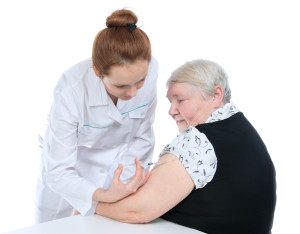 According to the Center for Disease Control, “Flu season” in the United States begins in October and may continue as late as May. Influenza, or the flu virus, includes the following symptoms:
According to the Center for Disease Control, “Flu season” in the United States begins in October and may continue as late as May. Influenza, or the flu virus, includes the following symptoms:
- Cough and/or sore throat
- Runny/stuffy nose
- Headaches or body aches
- Fever of 100 degrees Fahrenheit or higher
- Chills
- Fatigue
- Nausea and vomiting
Anyone six months and older can receive a flu shot and it is recommended that most people be vaccinated each season. A vaccination can be administered nasally or injected through the skin. Injections can be trivalent, effecting three different types of viruses, or quadrivalent, meaning they’ll fight against four types of flu viruses.
Alongside flu hype can be misleading myths and misconceptions, which may include the following:
Myth #1: Cold weather causes the flu.
Going outside in the cold cannot increase your risk of flu. Though the flu season may coordinate with the colder months, there is no real coordination. The only real connection to the spread of the flu virus and the weather, is the increase of contact in close quarters during the colder months.
Myth #2: The seasonal flu is annoying but not harmful.
Though some consider the flu “just a bad cold,” the symptoms of the flu often rival any seasonal cold symptoms. For example, a cold may include a runny nose, sinus congestion and a sore throat, where the flu often makes those who contract it feel as though they’ve been “hit by a truck.” with a fever, body aches, nausea and possible vomiting.
Myth 3#: You can get swine flu from pork-based products.
After the recent swine-flu scare some people swore of pork, bacon etc. However, experts have stated there is no way to contract the flu virus from pork-based products.
Myth #4: The flu vaccine can give you the flu.
This being the most common myth, experts have openly stated that there is no possible way that you can contract the flu from the flu vaccine. The flu vaccine only contains a dead virus and cannot actually infect the patient, and in the FluMist nasal spray, the live virus is specially engineered to kill the parts of the existing virus that make people sick.
Most experts claim that the side effects of the vaccine are often similar to the flu, making it easy to confuse the symptoms for the flu itself. In addition, some people may get sick with an unrelated cold or virus right after being injected with the flu vaccine.
Myth #5: There’s no treatment for the flu.
When taken within at least 48 hours of symptoms, Tamiflu and Relenza can be taken by pill form or inhaled to reduce the length of sickness or level of overall contagion.
Myth #6: Antibiotics can cure the flu.
Though in some cases of the flu there can be bacterial complications or issues with side effects, the flu virus cannot be cured with antibiotics. Antibiotics cannot even help with prevention, and unnecessary consumption may actually lead to a secondary bacterial infection.
Myth #7: The flu can only seriously affect the elderly.
Though the flu is well known for causing severe medical issues with the elderly, it can also affect very young children, with 90% of the H1N1 swine flu affection people under the age of 65. However, 90% of seasonal flu deaths can be attributed to the elderly.
Myth #8: If you get the flu once, you may get it again in the same season.
Because you can be affected by more than one strain of the flu virus, it’s very possible to get sick with different forms of the flu multiple times during the same season. Doctors encourage patients to get vaccinated, regardless of if they’ve been sick already or not.
Experts also advise against skipping years between vaccines, saying that each season the strain changes, making a different type of virus the most dominant one in need of targeting.
Myth #9: There’s no point in getting vaccinated past November.
Because of an increase in supplies preparedness, the flu vaccine is usually available until December or January, making it easy to fight illness throughout the entire flu season.
Overall, thorough hand washing and an annual fly vaccine can help you stay healthy throughout the year. If you haven’t gotten your flu shot this year, make a point to go in the next week. If you have any questions about if you are a good candidate for the flu show, feel free to contact the Chouchani, Sayegh and Bagnarello offices.
More information about the vaccine.
The CDC has created a full list of available vaccines for the 2014-2015 year as well as provided a vaccine locator to help get stay healthy this season. To view current information about flu levels and activity in the United States, you can view the CDC’s weekly FluView report.
More
 Being a new parent not only means experiencing new joys in your life, but it also adds a heaping pile of new responsibilities. While attempting to schedule appointments and playdates, maintaining responsibilities at work and keeping house and home in order, it can be extremely difficult to fit any time for yourself into an already-packed schedule. However, there are some simple ways to scoop up a few seconds for yourself and restore some serenity to your routine.
Being a new parent not only means experiencing new joys in your life, but it also adds a heaping pile of new responsibilities. While attempting to schedule appointments and playdates, maintaining responsibilities at work and keeping house and home in order, it can be extremely difficult to fit any time for yourself into an already-packed schedule. However, there are some simple ways to scoop up a few seconds for yourself and restore some serenity to your routine.
Seek out “child-friendly” facilities:
Some stores, gyms and other commercial enterprises offer kid-friendly rooms or babysitting services while their parents shop, workout or accomplish other necessities in a timely and efficient manner. Those few extra minutes of silence and privacy could really help you accomplish all you’re trying to do while still soaking up some personal time.
Most childcare places have a time limit, but just having the chance to absorb the additional ten to 30 minutes of peace can truly restart and refresh your day. Not to mention give you the chance to remember everything you had on your shopping list.
Treat yourself as well as you would treat others
Make sure to treat time you’ve blocked out for yourself like you would treat any other important commitment. Even if you’ve only allocated yourself ten minutes from your busy day, consider those minutes just as precious as if they’re the ten minutes you’ve scheduled for your baby’s doctor appointment, or the five minutes you’re taking to fill up your gas tank.
Just like others are deserving of your time and attention, you’re just as deserving of some valued alone time where you can choose to do whatever you wish and take pride in that decision without feeling guilty.
Read, Write and Listen
After hours of kid’s television, baby talk and nursery rhymes, keeping your brain from feeling like mush might feel like an impossible task. However, keeping a book on hand or an audiobook uploaded to your music player or burned to CDs keeps your mommy mind engaged and on edge while wandering through a stimulating crime fiction novel or best-selling biography.
Keeping a journal, blogging, tweeting or utilizing Pinterest boards and Facebook pages can be a creative and fulfilling way to chronicle your parenting experience while also interacting with other parents and sharing ideas and advice. Some parents also use social media as a way to chronicle their children’s lives, adventures and daily quirks and silliness in hopes that they’ll have a chance to share it with them later.
While posting information about your child on social media can be a difficult judgment call to make, there are ways to protect your online privacy and keep your memories within the family and safe from online strangers, usually made available under the website’s privacy settings.
Stick together
You’re not the first parent to struggle, and you certainly won’t be the last. Find another parent and work out a babysitting schedule so that you’re trading shifts throughout the month. Make a plan so that some nights you have time solely to yourself while your friend watches both children, and other nights you take them both while your friend has time alone to themselves.
Having another parent to talk with and rely on for help and advice can really make the whole parenting adventure less intimidating and, at points, more fun for both of you.
Though being a new parent can be incredibly stressful, there are simple ways to find small moments during the day for relaxation. Taking the time to take care of yourself is not only better for you, but it’s better for your relationship with your child as well. Your baby deserves a happy, healthy mom as much as you deserve time that’s all your own.
Our team of physicians at Chouchani, Sayegh and Bagnarello MD are here to help you stay healthy before, during and after your pregnancy. Check back often for more parenting tips and women’s health tips in the patient education section of the WNY-OBGYN website.
More
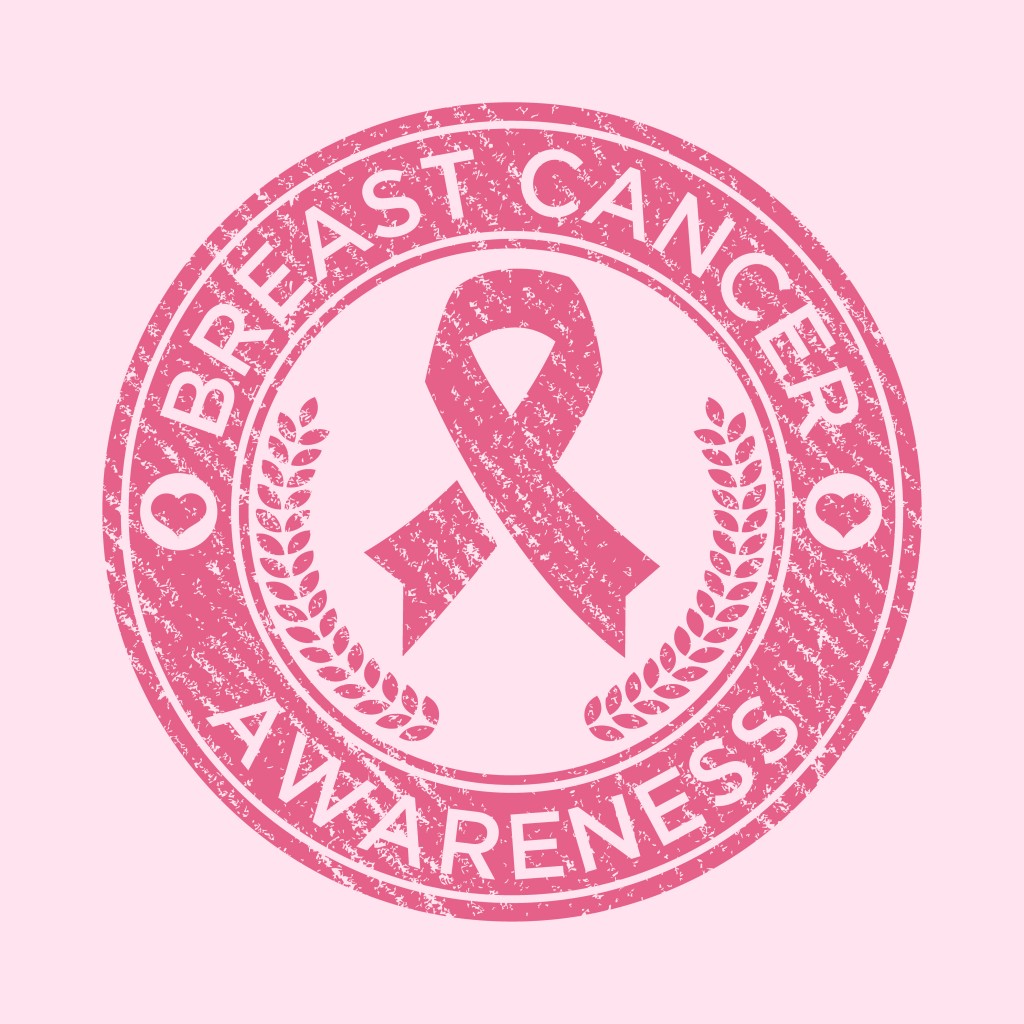 Lumps in the breast or armpit area should always be treated as serious matters. Performing self-exams or having a clinical exam or mammogram performed in a timely manner can lead to early detection and treatment, which can greatly increase chances of survival.
Lumps in the breast or armpit area should always be treated as serious matters. Performing self-exams or having a clinical exam or mammogram performed in a timely manner can lead to early detection and treatment, which can greatly increase chances of survival.
However, lumps in the breast or armpit aren’t always dangerous. Some lumps can be cysts, which may feel like a lump but is actually a small sac filled with fluid. Cysts may appear singularly or in a cluster.
Is it a cyst or tumor?
To determine if a lump is a cyst or a tumor, a healthcare professional will perform an ultrasound. This scan will allow the professional to see if the sac is hollow or filled with fluid, determining if the patient needs any sort of treatment or if the issue will resolve itself on its own.
If the lump is fluid filled, it may not require any treatment, and may also swell and retract based on the hormone cycle of the patient and the patient’s menstrual cycle. If the cyst becomes bothersome, it can be drained by a professional by first applying local anesthetic and then removing the fluid with a needle and syringe. Some cysts will re-fill, requiring them to be removed surgically or simply left alone to recede on their own.
If there is a history of cancer within the family, cysts can act as a risk factor, indicating the possibility of cancer starting in the patient’s body. However, most cysts do not indicate cancer and are almost never associated with a high risk of cancer.
Types of tumors
Breast tumors can be identified as malignant, a mass of cancerous cells that can invade and damage surrounding tissue, or benign, a mass of cells usually unaggressive towards surrounding tissue that will not continue to grow.
A tumor is often biopsied to discover whether it is malignant or benign, or if it needs to be removed from the body before it affects any other areas. Metastatic cancer is when malignant tumors spread to other parts of the body through the lymph nodes, or lymphatic system, and form secondary tumors.
Tumors are classified by grade based on the severity of the cell mutation and the likelihood that it will spread throughout the body. Breast cancer is graded on a scale of one to three with one being the lowest stage of aggression and three being the highest.
Low-grade tumors, ranked at a one, most closely resemble normal tissue, whole high-grade tumors ranked at a three look the least like normal tissue and can be extremely aggressive.
Tumor grading can help best determine a treatment plan, however tumor grades should NOT be confused with stages of cancer.
For more information on stages of breast cancer, search our patient education section of our website or visit the National Breast Cancer Foundation’s page.
More

According to the National Breast Cancer Foundation, one in eight women will be diagnosed with breast cancer during their lifetime. However, a diagnosis is not the end – there is hope and there is help.
There are many resources available for people who have been diagnosed with breast cancer, accessible via Internet, phone and some print publications.
Beyond the Shock, sponsored by the National Breast Cancer Foundation, is a free, online guide to understanding breast cancer and its treatment options. BtS can be used as a tool for those diagnosed with breast cancer, loved ones looking for more information or doctors seeking to share information and resources with patients and family members.
Beyond the shock offers educational videos, an open forum for asking questions about breast cancer and receiving answers, and stories from breast cancer survivors. It’s currently available in multiple languages (French, Spanish, Mandarin and Portuguese) and can also be downloaded as an app for smartphones and tablets.
Roswell Park Cancer Institute offers resources through the Western New York Breast Resource Center where team members aid patients and loved ones seeking information about breast cancer diagnosis, treatment and more. RPCI offers a lending library with print and video resources about current breast cancer information, screening techniques, prevention, diagnosis and treatment.
The center also offers services to help patients transition into “cancer survivorship,” as well as offering services to help during treatment.
WNYBRC programs include:
- Chemotherapy clinic tours
- Free wigs, scarves and hats for patients experiencing hair loss due to chemotherapy
- Look Good Feel Better makeover programs sponsored by the American Cancer Society
- Referrals to breast prosthesis and undergarment fitters
- Information and referrals to local support groups, financial assistance programs and transport services
- Information on other community support services
- Referrals to national breast cancer advocacy programs
For more information, hours and locations visit the WNYBRC website.
The Susan G. Komen foundation offers resources for people diagnosed with breast cancer, family members of patients and offers a place for survivors to tell their stories of struggle and recovery. The website offers information, support and a mission statement promising aid to whoever needs it, regardless of what stage they’ve reached with diagnosis, treatment or survival.
The SGK foundation also offers information about their fundraising events, financial assistance information and places to donate for research and recovery.
WebMD offers information on breast cancer symptoms, treatment, research and support. While providing some information, WebMD has also compiled a list of links and resources from other cancer-care networks such as the National Comprehensive Cancer Network, National Breast Cancer Coalition, American Cancer Society and more.
The Breast Cancer Care Foundation also provides a comprehensive list of financial resources for families and patients dealing with cancer diagnosis and treatment.
Breast cancer diagnosis and treatment is a difficult journey, but with resources and support, things can be made easier. For more information about breast cancer research, diagnosis etc. visit our patient education section.
More
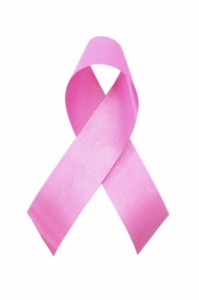 October is breast cancer awareness month. Throughout this month, Chouchani, Sayegh and Bagnarello MD will be posting articles about breast cancer prevention and what to do post diagnosis. This week we are focused on early detection.
October is breast cancer awareness month. Throughout this month, Chouchani, Sayegh and Bagnarello MD will be posting articles about breast cancer prevention and what to do post diagnosis. This week we are focused on early detection.
Breast cancer is a disease that occurs when malignant (bad) cancer cells form in the tissue of the breast. One in eight women will be diagnosed with breast cancer during their lifetime and breast cancer is the most commonly diagnosed cancer in women. While breast cancer is the second leading cause of death in women, it can also occur in men with an estimated 2,150 men diagnosed per year.
However, according to the National Cancer Institute, when detected early in the “localized stage,” the five-year survival rate for breast cancer is 98%.
Early detection is easiest when you know the signs and symptoms of breast cancer while also performing regular self-exams.
Signs and symptoms to watch for:
- Nipple tenderness
- Thickening lump in the breast or underarm area
- Change in the skin around the breast or nipple, or enlargement of the skin’s pores
- Lump in the breast or a change in the shape or size of the breast
- Dimples anywhere on the breast
- Unexplained swelling or shrinkage of the breast (especially limited to one side)
- Nipple turned inward or inverted
- Red, swollen or scaly skin around the breast, nipple or areola
- Any clear or bloody nipple discharge
Most people experiencing signs and symptoms will only experience two or three and that does not mean they automatically have breast cancer. If you are experiencing any of the signs or symptoms, or feel any sort of unexplained lump in the breast or armpit area, contact your physician immediately.
Self-exams are extremely important especially concerning early detection. For further instruction on performing self-exams, see a previous article here, or you can find more information on the website for the National Breast Cancer Foundation here. Self-exams should be performed at home about once a month.
A clinical exam can be performed by a healthcare professional in-office during an appointment or during an annual exam or physical. Healthcare professionals will check the breast and armpit for lumps while also checking the skin for abnormal coloration, texture or discharge.
Mammograms are conducted by taking an x-ray of the breast tissue to examine the tissue for suspicious clusters, flecks, growths etc. Women over 40 should have a mammogram every one to two years, while women under 40 with risk factors should ask their healthcare professional what’s best.
The National Breast Cancer Foundation also offers an Early Detection Plan which is available for iPhone and Android on the App Store and on Google Play. The EDP reminds users to do monthly self-exams with notifications on their phones, tablets or computers and also aids in scheduling clinical breast exams and mammograms. For more information, visit their website here.
Reducing the risk of breast cancer can be as simple as maintaining a healthy weight, staying physically active, maintaining a healthy diet, and limiting alcohol and tobacco consumption. Early detection leads to the greatest possibility for efficient and successful treatment.
For more information on breast cancer, visit our patient education section here. And if you’d like to make an appointment with any of our doctors, please give us a call today. We are accepting new patients in all three of our offices in Western New York!
More
 When should a girl start seeing a gynecologist or obstetrician-gynecologist (OB/GYN)?
When should a girl start seeing a gynecologist or obstetrician-gynecologist (OB/GYN)?
Even if you’re not sexually active, the American College of Obstetrics and Gynecology recommends that you go between the ages of 13 and 15, although any time after menstruation and before your eighteenth birthday is fine. If you’re sexually active, go as soon as possible!
And why should you go?
To have confidential discussions about sex, sexuality, menstruation, pregnancy prevention, sexually transmitted diseases—pretty heavy stuff. It may sound like it will be an incredibly awkward experience, but here’s some information that may set you at ease:
- The first appointment is mostly about talking. To begin, the doctor or nurse will ask you questions about your health and lifestyle. They’ll go over your health history, like how old you were when you got your period and if you have any problems with it. They’ll ask about your sexual history, whether you’re sexually active or just thinking about it—and if you are, what birth control you use. They’ll also discuss your lifestyle: do you smoke cigarettes? Do you drink alcohol? Do you take drugs? Do you practice sexual behaviors that might put you at risk for STDs?
- You probably won’t need an internal pelvic exam. Unless you’re sexually active or having a medical issue, your physical exam will be external. The doctor will examine your outside genital area, your abdominal area, and your breasts. She or he is just checking for visible abnormalities, tenderness or lumps in your breast tissue. You shouldn’t need a Pap smear until you’re 21. As for the dreaded stirrups? They’re only there so you have a place to rest your heels and be more comfortable when you’re lying on the exam table. Many practices cover them with something soft.
- If you do need an internal pelvic exam, relax! You may know that this is when the doctor will use a speculum, either metal or plastic, to hold your vagina open so she or he can see if everything looks normal and healthy. Don’t worry—the speculum they use for teenagers is about the size of a super tampon. This part of the exam can be uncomfortable, but it shouldn’t hurt. If it does, speak up! After removing the speculum, the gynecologist will feel inside of you with one hand and press on your abdomen with the other. She’s checking to see if your fallopian tubes, uterus, and ovaries are in the right position and whether they feel normal. If any part of this process hurts, let the doctor know. And throughout, do deep, slow breathing and let your legs relax as best you can.
Remember, your doctor has seen and heard everything.
There is probably nothing you could ask or discuss that your OB/GYN hasn’t dealt with before. And everything you talk about is confidential. So go ahead and ask questions about your anatomy, your period, birth control, different sexual practices and anything else you might be curious or concerned about.
At Chouchani, Sayegh and Bagnarello, we know how strange that first appointment can feel. We’ll do our best to make sure you feel at ease. Please give us a call when you’re ready to make that first appointment.
More
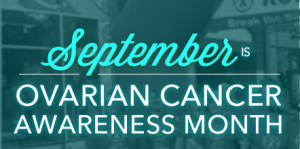 September is National Ovarian Cancer Awareness Month —a great time to learn more about this disease, which is the fifth-leading malignant cause of death among U.S. women.
September is National Ovarian Cancer Awareness Month —a great time to learn more about this disease, which is the fifth-leading malignant cause of death among U.S. women.
Who gets ovarian cancer?
Ovarian cancer tends to occur in women in their fifties and older, but almost a third of cases crop up in women under the age of 55. Many ovarian cancer patients have a genetic disposition, which may include:
- Carrying the BRCA1 and BRCA2 gene
- Having breast cancer
- Having Lynch Syndrome, an inherited condition
- Having a first-degree relative with ovarian, breast, colon or uterine cancer
A woman’s menstrual cycle may also affect her chance of developing ovarian cancer. Your risk is increased if you:
- Started menstruating before the age of 12
- Haven’t given birth
- Had your first child after 30
- Experienced menopause after 50
- Have never taken oral contraceptives
Women who use menopausal hormone replacement therapy are also at an increased risk for ovarian cancer.
What are the symptoms of ovarian cancer?
One of the reasons ovarian cancer tends to be discovered late is that symptoms can be vague. They include bloating, weight gain, an increase in abdominal girth, a feeling of fullness after eating relatively little, or pain in the lower abdomen, pelvic area or bladder.
Additional symptoms may include fatigue, indigestion, back pain, pain with intercourse, constipation and menstrual irregularities.
Unfortunately, there is no adequate screening test for ovarian cancer. However, women who have experienced it report that their symptoms were persistent and were abnormal for their bodies. See your doctor, preferably a gynecologist, if you have these symptoms more than 12 times in one month and the symptoms are new or unusual for you.
What if I think I might have ovarian cancer?
After you’ve discussed your symptoms, your doctor can perform a battery of tests: a complete pelvic exam, a transvaginal or pelvic ultrasound, and a CA-125 blood test. On their own, these tests are not definitive, but they are most effective when used in combination with each other. However, the only definitive way to determine if you have ovarian cancer is through surgery and biopsy.
If you are concerned about your health history, your risk factors or any symptoms you might be experiencing, please call Chouchani, Sayegh and Bagnarello. We’d be happy to have you come in to talk things over with our team.
More
 The holidays are a great time for family get-togethers, conversation and of course, food. For those of us trying not to gain the 25 pounds of Christmas, following these simple tips and tricks can keep you trim this holiday season while still letting you sneak a few bites of those steaming hot gingerbread men.
The holidays are a great time for family get-togethers, conversation and of course, food. For those of us trying not to gain the 25 pounds of Christmas, following these simple tips and tricks can keep you trim this holiday season while still letting you sneak a few bites of those steaming hot gingerbread men.








